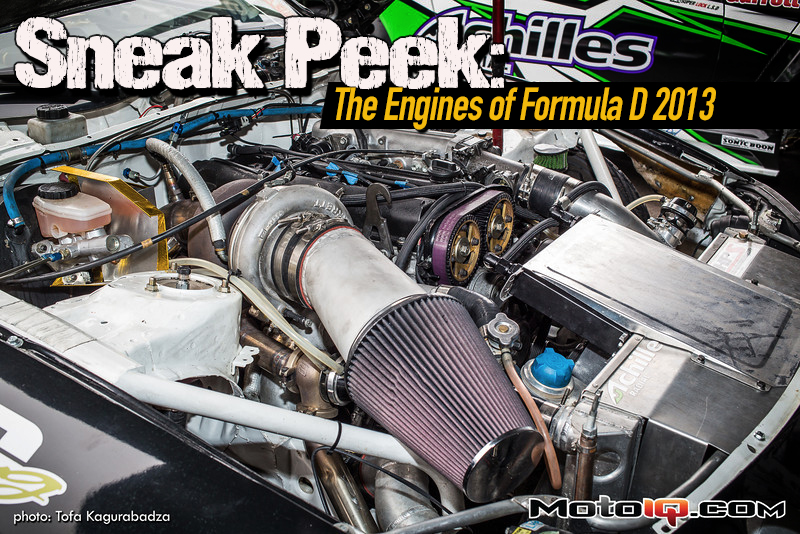,
 |
 |
| 2013 Round 1 winner Dai Yoshihara's ride has some good ole 'Merica V8 power. Well, it's actually pretty high tech V8 power. It is an RHS engine which is a unique racing engine based on GM LS architecture. The RHS has a 1″ taller deck to accommodate longer strokes and connecting rods to keep piston speeds down in a long stroke engine. The engine is over 450 CID. It also has RHS head castings which have straighter flow optimized ports and a thicker deck to avoid cracking under the rocker stands, a problem LS motors have. An interesting thing is a good old Edelbrock Victor Jr. intake manifold but instead of a carburetor, it has a big 4 barrel throttle body with a progressive linkage. This intake gives much more power than the LSX Manifold the car used to use. This manifold was used because Dai doesn't like the immediate throttle response of ITB's. I'm diggin' the new air filter brick setup; lots of surface area means lower pressure drop and more power. |
 |
 |
| DMac's new ride for the year is a little bit newer generation of S-chassis, the S14 compared to Dai's S13. The engine bay of the two cars look pretty similar, but DMac has a little bit different flavor of V8 powering his car. It is a 410 sprint car engine based on old school small block Chevy architecture. The 410 cubic inch engine uses a race derived Dart aluminum block and cylinder heads. Although this is a race fortified aftermarket block and heads, most parts will interchange with the venerable small block. Even though it is a 50 year old design, the small block Chevy is smaller and more compact than the already pretty compact LS! The 410 weighs about 40 lbs less than the RHS in Dai's car. The engine has ITB's and makes about the same power as the RHS with less torque delivered higher in the rev range. The engine revs about 800 rpm more than the RHS. DMac's car sounds really good with a scream instead of a rumble. |
In case you weren't keeping track, Formula Drift has the following setups (and I probably missed a few): Japanese twin-scroll turbo inline-4 and turbo flat-4, single and twin-scroll turbocharged, Turbo Nitrous rotaries, German inline-6s, pony keg sized turbo with nitrous on Japanese inline-6s, Japanese and Korean V6s with single turbos, naturally aspirated American V8s, naturally aspirated Japanese V8s, Japanese V8s with single and twin turbos. To add to those, we should be seeing twin-turbo American V8s pretty soon. Now that’s what I call diversity. Regardless of the powertrain setup, because of the added grip of advances in suspension tuning, it looks like a minimum of 600whp is needed to play in this crowd with a few pushing the 1000+ whp barrier. Can the little 4-bangers keep up with the bigger engines now that the V8s are adopting turbo power too? I guess we'll find out as the season progresses.


